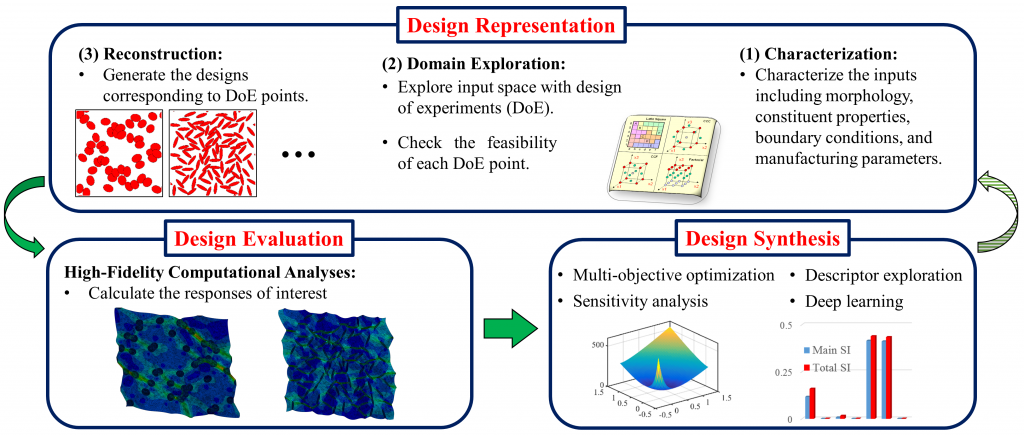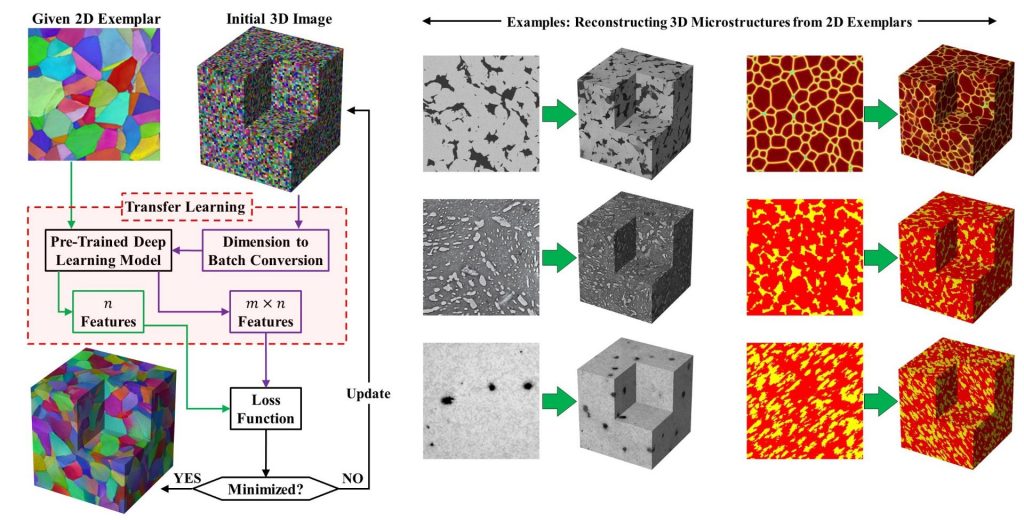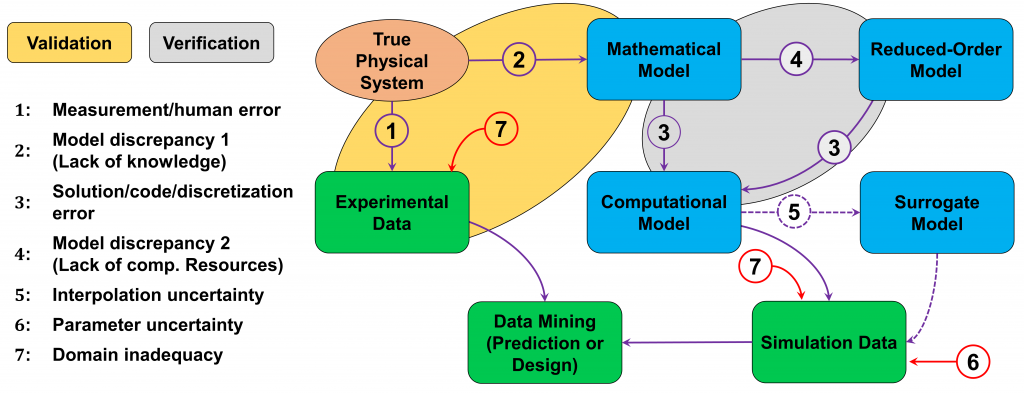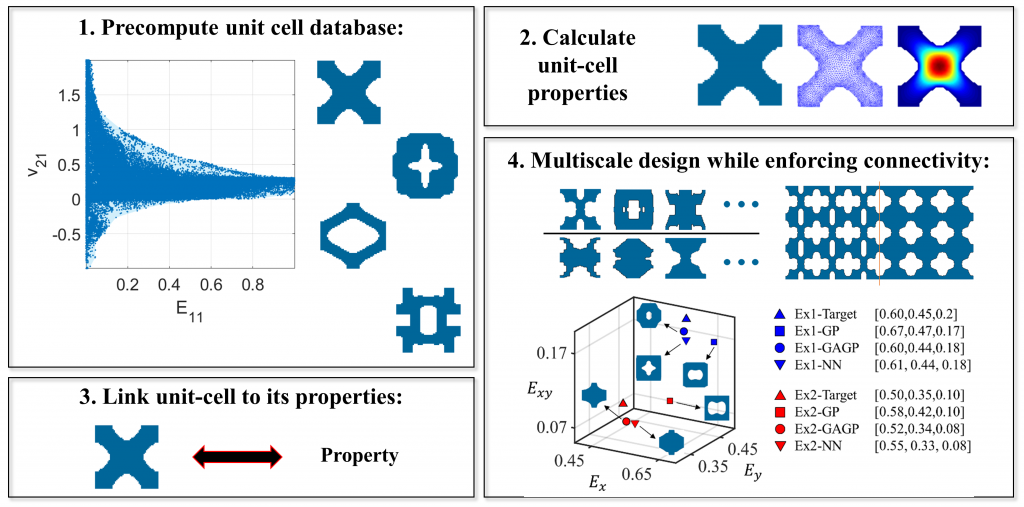Overarching Research Scope
Our research is at the interface of computational statistics, scientific machine learning, engineering design, and computational mechanics. Some of the fundamental questions that we ask in our research are: What are the main uncertainty sources in a complex system? How can we assimilate multiple information sources to make better decisions under uncertainty? How to accelerate expensive multiscale simulations by orders of magnitude? How to optimize the high-dimensional morphology of materials to maximize their strength, energy storage, or toughness?
Mechanistic Deep Learning for Probabilistic Materials Design
There has been a recent surge in employing deep learning for materials modeling and design where the motivation is to bypass expensive and time-consuming experiments that are traditionally used to discover materials with superior properties. These approaches, however, are not applicable to multiscale materials since the corresponding simulations are extremely costly and involve complicated deformation mechanisms. Hence, building large training datasets with manageable dimensionality is infeasible. In this research theme, we develop a computational framework based on deep learning where the physics and statistics of the material system are leveraged to reduce the reliance on data and, at the same time, provide honest uncertainty quantification. The proposed framework will be applied to, among other applications, predicting spatially varying properties of composites and casting alloys. The results of this work will provide a systematic computational framework to engineer materials with targeted properties; impacting the fields of materials science, mechanics of materials, and engineering design.
Microstructure Reconstruction via Machine Learning
Building sensible processing-structure-property (PSP) links to gain fundamental insights and understanding of materials behavior has been the focus of many works in computational mechanics and materials science. Under this research theme, we develop probabilistic machine learning methods that enable the design and reconstructions of a wide range of microstructures such as porous, composites, alloys, and crystals.
Data Assimilation and Bayesian Analysis of Computer Models
Recent advances in computational sciences have dramatically decreased the reliance on often costly physical experiments by enabling simulation of complex physical systems through mathematical models. To arrive at credible predictions and decisions made via such models, however, one must acknowledge and address the various uncertainty sources that are introduced at different stages of modeling as illustrated below.
The myriad of uncertainty sources renders calibration and bias correction of computer models difficult. To address the challenges and enable predictive modeling and simulation-based decision making, we develop Bayesian methods to fuse multiple sources of data together to estimate unknown simulator parameters, determine potential discrepancies of the simulator, and provide an inexpensive but accurate emulator to significantly reduce simulation costs.
Uncertainty Quantification and Propagation
Uncertainty is inevitably introduced in materials’ behavior starting from the design and constituent selection stages, through the manufacturing processes, and finally during operation. For this reason, ever-growing research is conducted to rigorously couple computational models with statistical uncertainty quantification (UQ) and propagation (UP) methods to provide probabilistic predictions that are in line with the observed stochasticity in materials. UQ and UP are actively pursued in various fields of science and engineering. They are, however, seldom applied to multiscale simulations due to the significant computational costs and complexities. Our goal is to devise non-intrusive and data-driven UQ and UP approaches that are founded on stochastic processes and deep learning. We aim to characterize the uncertainties in multiscale simulations where multiple uncertainty sources (including spatial microstructural variations) arise from different length-scales. This project will provide a computational foundation for designing multiscale materials under uncertainty.
Metamaterials Design
Metamaterials possess superior properties through their hierarchical structure that consists of repeated unit cells. While traditional methods like topology optimization provide a systematic computational platform to find metamaterials with unprecedented properties, they have many challenges that are primarily due to the high dimensional design space (i.e., the geometry of unit cells), computational costs, local optimality, and spatial discontinuities across unit cell boundaries (when multiple unit cells are simultaneously designed). In this project, we take a data-driven approach to address the myriad challenges associated with multiscale design of manufacture-able metamaterials with spatially varying unit-cells.




